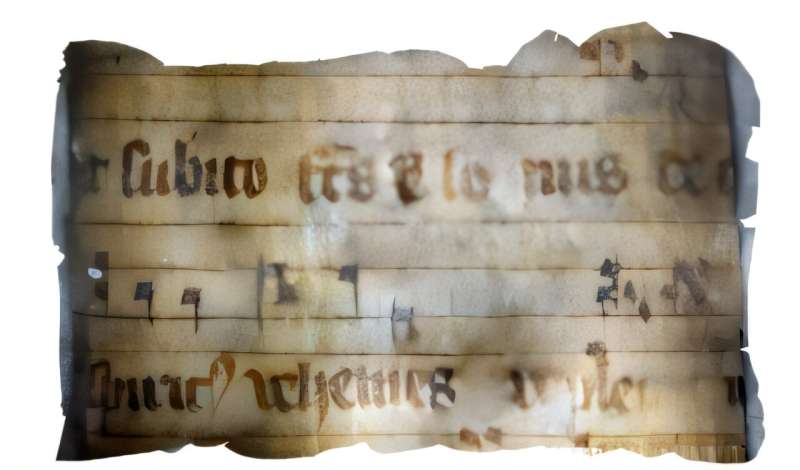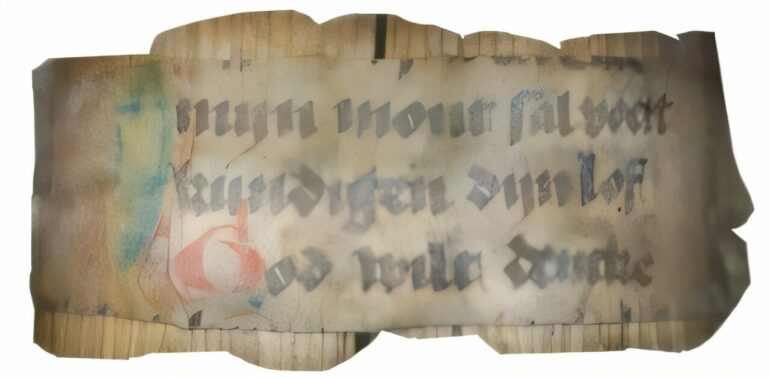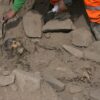An endoscopic camera was used to record images of reused medieval fragments on the inside of book bindings from the 16th and 17th centuries. The unique images were made as part of the project “FragmEndoscopy: An Innovative Way to Discover Hidden Heritage inside Early Modern Book Bindings.”
Bookbinders in the 16th and 17th centuries usually reinforced their book bindings with pieces of parchment. Because new parchment was quite expensive, they used old, medieval manuscripts and cut them into strips. This form of “recycling” meant that many medieval manuscripts were lost—fragmented and invisible, they are hidden away inside early modern book bindings.
A new method makes it possible to make some of these reused medieval fragments visible again. Thijs Porck, associate professor of medieval English in Leiden, used an endoscopic camera to record images of the inside of an early modern book spine.
In a new publication in the journal Fragmentology, the researchers share their findings and introduce their method with which hidden medieval fragments can be made visible again after hundreds of years.
Using a gun barrel inspection camera
The camera Porck used in his NWO project “FragmEndoscopy: An Innovative Way to Discover Hidden Heritage inside Early Modern Book Bindings” was originally intended for the inspection of gun barrels, but its small diameter and mirrors also made it very suitable to perform “keyhole surgery” on old books.
Together with student assistant Iris van Kuijk, Porck made video recordings of the inside of several books in the Leiden University Library and the Noord-Hollands Archief in Haarlem. Screenshots of these videos were pasted together, creating an image of the once-reused medieval fragments.

A 14th-century fragment of the versus alleluiaticus on the inside of Haarlem, Noord-Hollands Archief, 165 G 5. © Leiden University
Medieval music fragments and Middle Dutch texts
The FragmEndoscopy method proved not only successful, but also practical and affordable. Previous attempts to make fragments visible on the inside of book bindings used X-rays, expensive equipment and lengthy analyses.
With an endoscopic camera costing less than 600 EUR, images could be taken within a few minutes; the composition of the images then took only a few hours. During the research, Middle Dutch fragments were found, as well as a music fragment from the 14th century, complete with musical notes.
More information:
Thijs Porck et al, Medieval Fragments Revealed with FragmEndoscopy, Fragmentology (2025). DOI: 10.24446/h9ht
Citation:
Keyhole surgery on old books leads to discovery of medieval fragments (2025, January 13)



